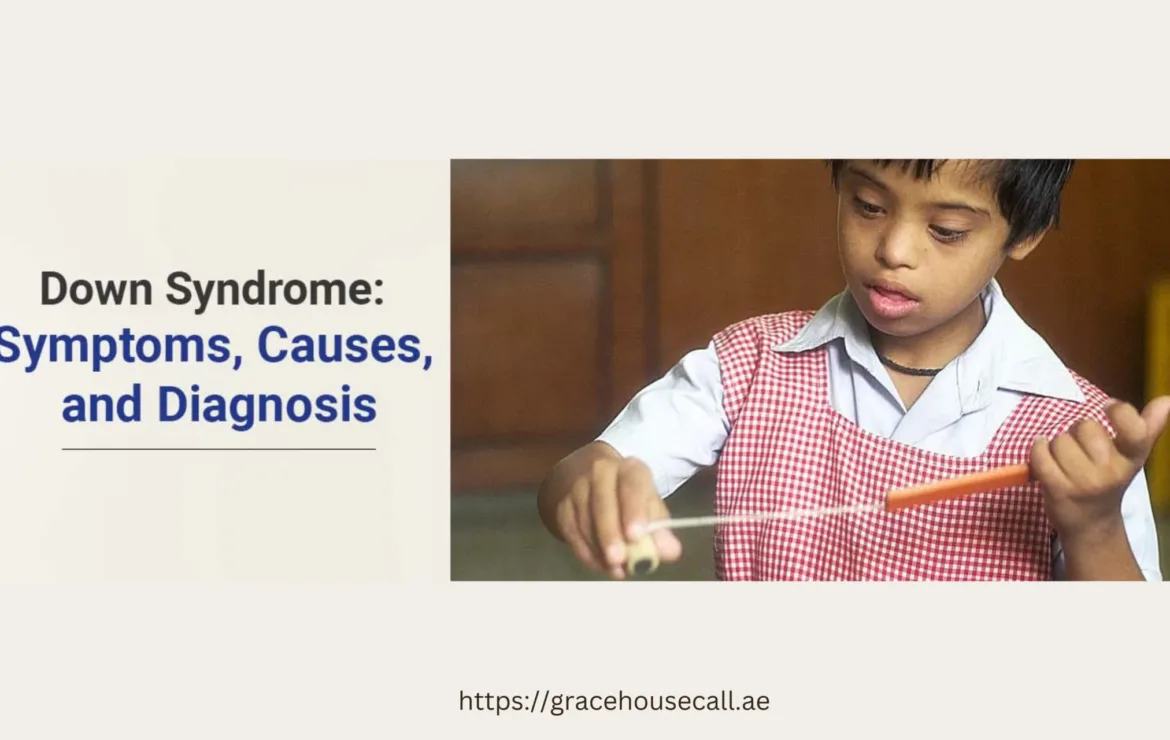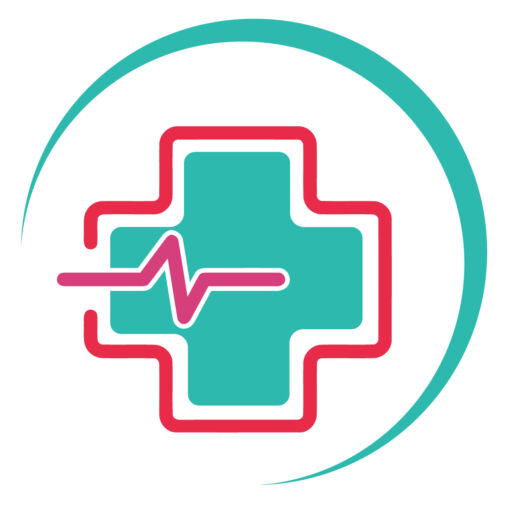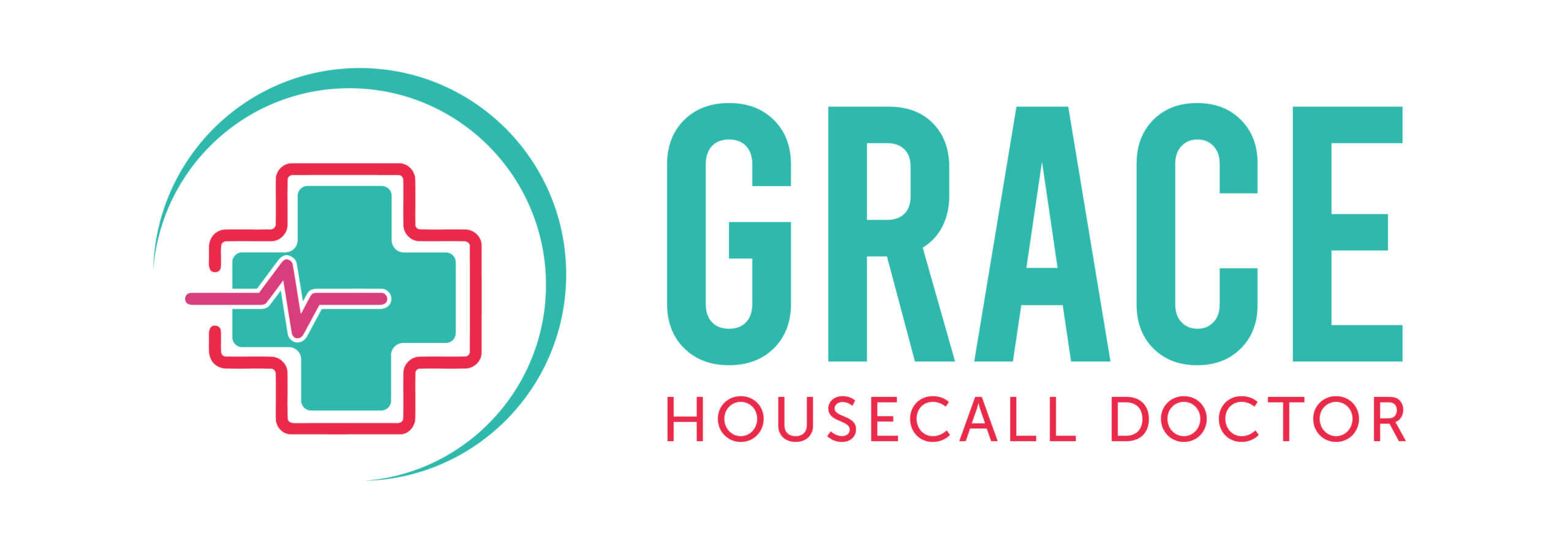Down Syndrome, it’s types and causes!

WHAT IS DOWN SYNDROME?
An additional chromosome causes a person to have Down syndrome. The body’s chromosomes are tiny “packages” of genes. They control the development and growth of a baby’s body during pregnancy and after birth. A newborn usually has 46 chromosomes. One of these chromosomes, chromosome 21, has an extra copy in babies diagnosed with Down syndrome. “Trisomy” is the medical term for having an extra copy of a chromosome. Another name for Down syndrome is Trisomy 21. The baby may have difficulties with their mental and physical development as a result of this additional copy, which alters how their body and brain develop.
From child to child, the physical characteristics and health issues associated with Down syndrome can differ significantly. Some children have long, healthy lives, while others require extensive medical care.
WHAT CAUSES DOWN SYNDROME?
46 chromosomes, normally 23 from the mother and 23 from the father, contain the genetic material that a baby inherits from its parents. Our genes, which contain the information that dictates how our bodies function and appear, including inherited characteristics like eye and hair color, are stored on our chromosomes.
A child with Down syndrome typically receives an additional chromosome 21, making their total chromosome count 47 rather than 46. The extra chromosome 21 rarely joins forces with another chromosome. People with Down syndrome have physical characteristics and developmental delays that are caused by this additional genetic material. Whether the extra chromosome is connected to another chromosome or not does not affect the features.
TYPES OF DOWN SYNDROME
There are three types of Down syndrome. People often can’t tell the difference between each type without looking at the chromosomes because the physical features and behaviors are similar.
Trisomy 21
Trisomy 21 accounts for approximately 95% of cases of Down syndrome, where an individual has three copies of chromosome 21 in all cells, as opposed to the normal two copies. This results from aberrant cell division that occurs when the sperm or egg cell is developing.
Mosaic Down syndrome
A person with this uncommon type of Down syndrome only possesses a few cells that carry an extra copy of chromosome 21. After fertilization, aberrant cell division results in this mosaic of normal and aberrant cells
Change of location Down syndrome
Before or during conception, a piece of chromosome 21 may translocate, or attach itself, to another chromosome, resulting in Down syndrome. These kids have two copies of chromosome 21 as is typical, but they also have extra 21-related genetic material linked to another chromosome.
IS DOWN SYNDROME INHERITED?
For the most part, Down syndrome is not hereditary. It results from an error in cell division that occurs early in the fetus’s development.
Change of location Parents can pass on Down syndrome to their children. On the other hand, translocation affects only 3–4% of children with Down syndrome, and only some of these children receive it from a parent.
The mother or father has some rearranged genetic material from chromosome 21 on another chromosome, but no extra genetic material, when balanced translocations are inherited. Thus, although he or she does not exhibit any Down syndrome symptoms or indicators, they can pass on an unbalanced translocation to offspring, which can result in the development of Down syndrome in the offspring.
RISK FACTORS
Some parents have a greater risk of having a baby with Down syndrome. Risk factors include:
- Increasing maternal age – Because older eggs are more likely to undergo incorrect chromosome division, a woman’s chances of giving birth to a child with Down syndrome rise with age. The probability of a woman carrying a child with Down syndrome rises beyond the age of thirty-five. But because younger women give birth to far more children than older ones, the majority of Down syndrome children are born to women under 35.
- Carriers of the Down syndrome genetic translocation– The Down syndrome genetic translocation can be inherited by both men and women and passed on to their offspring.
- Having had one child with Down syndrome– There is a higher chance of having another child with Down syndrome for parents who have had one child with the condition as well as for parents who are translocations. Parents evaluating the possibility of having a second child with Down syndrome can be assisted by a genetic counselor.
COMPLICATIONS
Many complications can arise in people with Down syndrome, some of which become more noticeable as they age. These issues may manifest as:
- Heart defects: Congenital heart defects affect about half of the children with Down syndrome at birth. These cardiac issues may need surgery in the early stages of infancy and pose a life-threatening risk.
- Defects of the gastrointestinal system (GI): Some children with Down syndrome have GI abnormalities, which can include problems with the intestines, esophagus, trachea, and anus. There may be a higher chance of developing digestive issues like celiac disease, GI blockage, or heartburn (gastroesophageal reflux).
- Immune disorders: Individuals with Down syndrome are more susceptible to autoimmune disorders, certain types of cancer, and infectious diseases like pneumonia due to anomalies in their immune systems.
- Sleep apnea – Because of soft tissue and skeletal changes that lead to the obstruction of their airways, children and adults with Down syndrome are at greater risk of obstructive sleep apnea.
- Obesity- Compared to the general population, people with Down syndrome are more likely to be obese.
- Spinal issues – Atlantoaxial instability is a misalignment of the top two vertebrae in the neck that can occur in some individuals with Down syndrome. Due to this condition, they run the risk of suffering a major spinal cord injury from overextension of the neck.
- Leukemia – Young children diagnosed with leukemia are more likely to have Down syndrome.
- Dementia – Individuals with Down syndrome are far more likely to develop dementia; symptoms and indicators may appear around age 50. The chance of Alzheimer’s disease also rises in people with Down syndrome.
- Other problems – Other medical disorders, such as endocrine issues, dental issues, seizures, ear infections, and issues with hearing and vision, may also be linked to Down syndrome.
DIAGNOSIS OF DOWN SYNDROME
To identify Down syndrome during pregnancy, there are two main test types available: screening tests and diagnostic tests. A screening test can determine whether a woman’s pregnancy has a higher or lower risk of resulting in Down syndrome for her and her healthcare provider. Although screening tests are safer for the mother and the developing child, they do not offer a definitive diagnosis. The majority of the time, diagnostic testing can determine whether a child will have Down syndrome, but there is an increased risk to both the mother and the developing child. Nobody can foresee the full impact of Down syndrome on a baby, not even with screening or diagnostic testing.
HOW DO HEALTHCARE PROVIDERS DIAGNOSE DOWN SYNDROME?
Medical professionals can perform postpartum or postnatal screenings for Down syndrome. Pregnant women can be tested for Down syndrome using one of two methods:
- A prenatal screening test – This test can show an increased likelihood that a fetus has Down syndrome, but it cannot determine whether Down syndrome is present. If a screening test shows an increased likelihood, a diagnostic test can be ordered.
- A prenatal diagnostic test: This test can conclusively identify the presence or absence of Down syndrome. Compared to screening tests, diagnostic tests pose a marginally higher risk to the developing fetus.
PRENATAL SCREENING FOR DOWN SYNDROME
- A blood test and an ultrasound test during the first trimester of pregnancy – This is the most accepted approach for screening during the first trimester. A blood test enables a health care provider to check for “markers,” such as certain proteins, in the mother’s blood that suggest an increased likelihood of Down syndrome.
- Then the health care provider does an ultrasound test, which uses high-frequency sound waves to create images. An ultrasound can detect fluid at the back of a fetus’s neck, which sometimes indicates Down syndrome. The ultrasound test is called measurement of nuchal translucency. During the first trimester, this combined method results in more effective or comparable detection rates than methods used during the second trimester.
- A blood test during the second trimester of pregnancy – As in the first trimester, a blood test enables a health care provider to check for markers in the mother’s blood. A triple screen looks for levels of three different markers; a quadruple screen looks for levels of four different markers.
If a woman is pregnant with twins or triplets, a blood test will not be as reliable, because the substances from a Down syndrome fetus may be harder to detect.
PRENATAL DIAGNOSTIC TESTING FOR DOWN SYNDROME
A diagnostic test can be carried out if the results of a screening test point to the possibility of Down syndrome. Pregnant women of all ages should have the choice to forego the screening test and instead receive a diagnostic test, according to ACOG recommendations. Due to the small chance of miscarriage associated with diagnostic testing, this option was previously only available to women over 35 and other at-risk women. A pregnant woman and her family may wish to consult with a genetic counselor before undergoing diagnostic testing to go over their family history and the advantages and disadvantages of testing for their circumstances.
A genetic sample is taken as a part of the Down syndrome diagnostic procedure. Following its removal, the sample is examined for additional chromosomal 21 material, which could suggest that the fetus has Down syndrome. The test results are typically sent to parents a week or two after the exam. The following procedures are used to extract samples.
Amniocentesis
A health care provider takes a sample of amniotic fluid, which is then tested for the extra chromosome. This test cannot be done until weeks 14 to 18 of the pregnancy.
Chorionic villus sampling (CVS)
A healthcare provider takes a sample of cells from a part of the placenta, which is the organ that connects a woman and her fetus, and then tests the sample for the extra chromosome. This test is done between weeks 9 and 11 of pregnancy.
Percutaneous umbilical blood sampling (PUBS)
A healthcare provider takes a sample of fetal blood in the umbilical cord through the uterus. The blood is then tested for the extra chromosome. PUBS is the most accurate diagnostic method and can confirm the results of CVS or amniocentesis. However, PUBS cannot be performed until later in the pregnancy, between weeks 18 and 22.
TREATMENTS
Down syndrome is a lifelong condition. Services early in life will often help babies and children with Down syndrome to improve their physical and intellectual abilities. Most of these services focus on helping children with Down syndrome develop to their full potential. These services include speech, occupational, and physical therapy, and they are typically offered through early intervention programs in each state. Children with Down syndrome may also need extra help or attention in school, although many children are included in regular classes.






